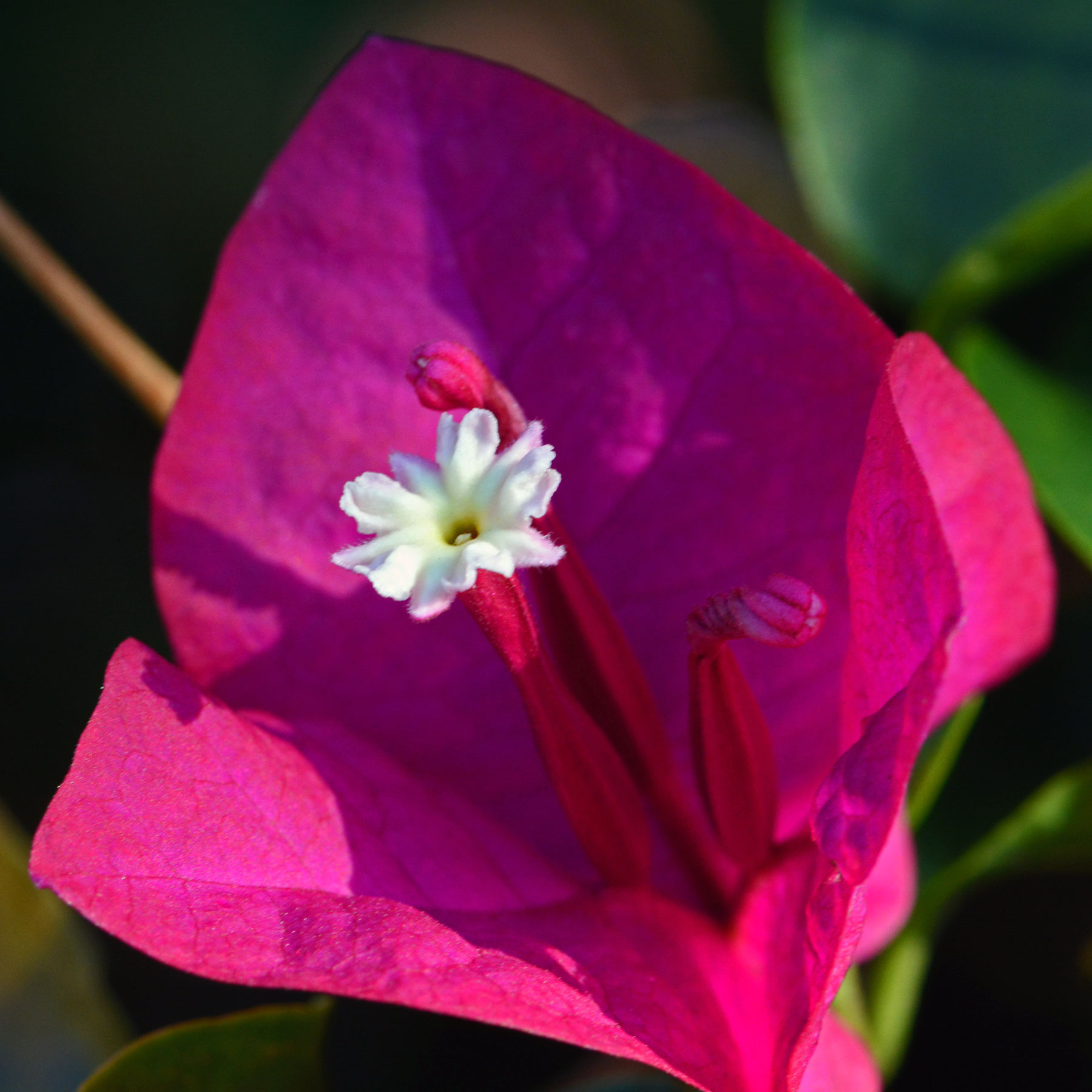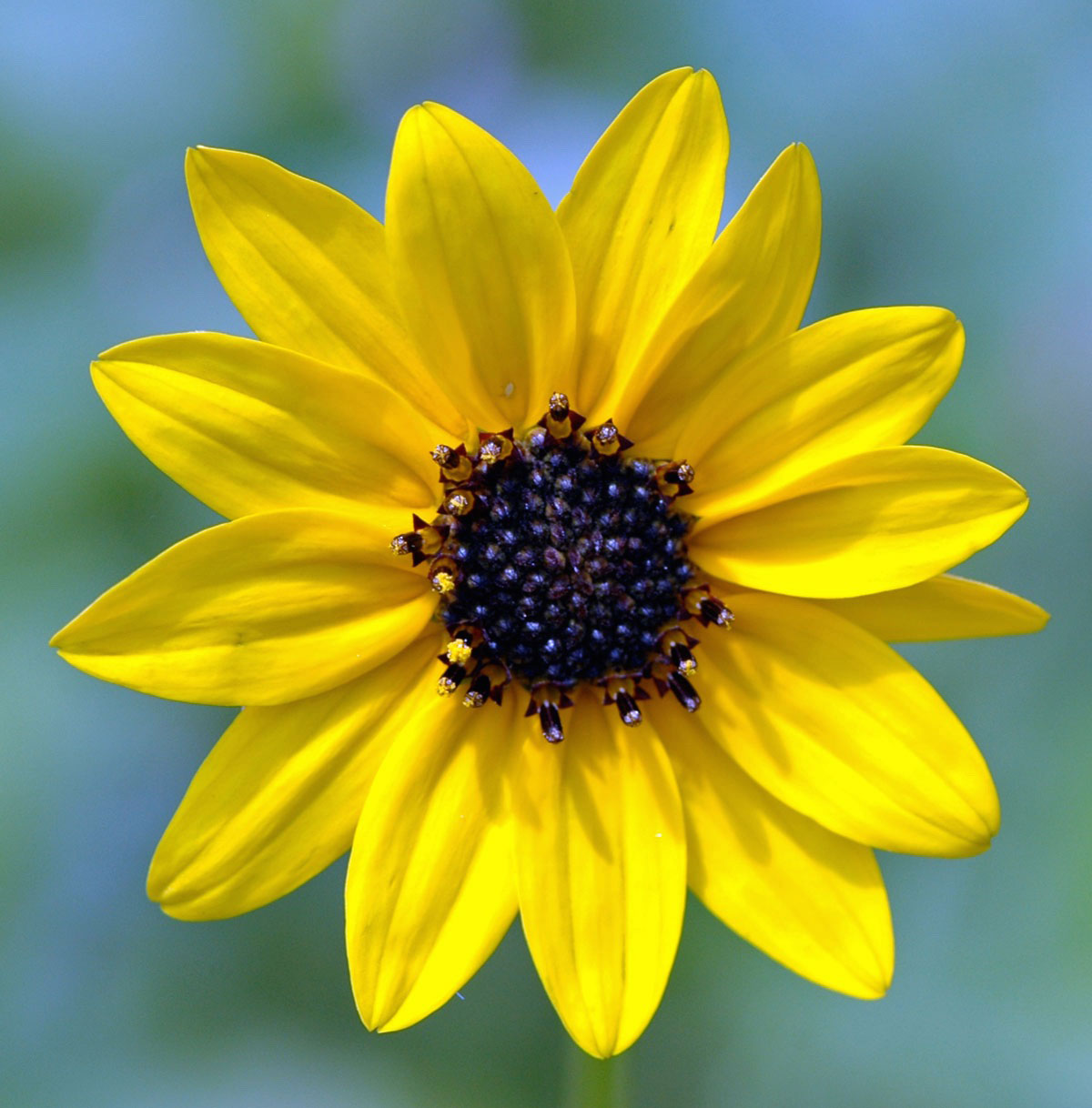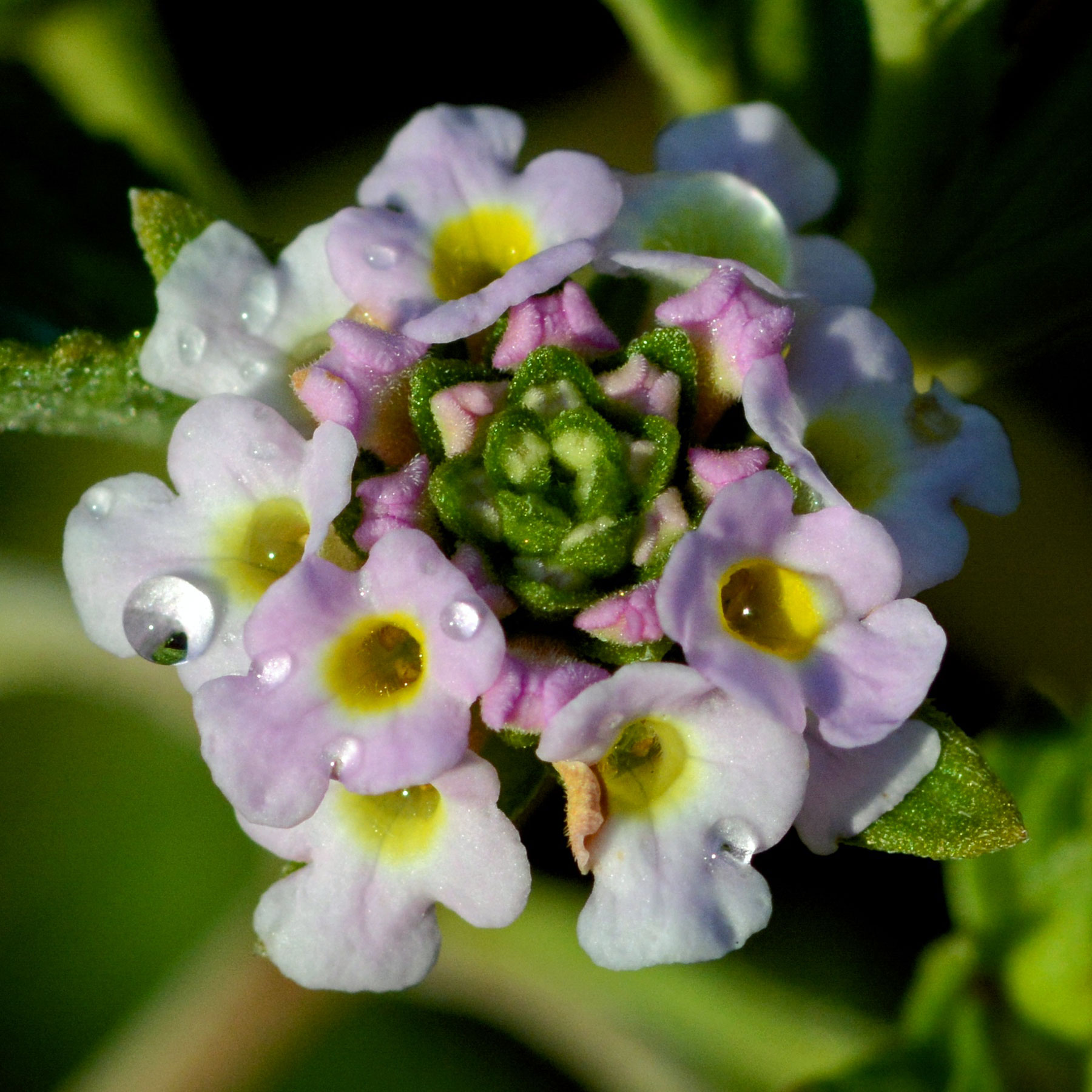My last post was about a nice little Florida native plant that I’m trying out (again) in the yard: Lantana involucrata. Now “lantana,” you’ll recall, in addition to being the name of a town not far from where I live, comes from the Latin for “flexible,” whatever that may mean when applied to these rather woody shrubs.
But in that recent post about this little flowering shrub, I never did get around to the definition or derivation of the specific name, “involucrata.” To do that requires a bit of background, so sit tight, hold on, and learn with me.
When I looked the plant up on the FNPS blog, Laurie Sheldon’s recent article on the different lantanas available told me that this species has white flowers “borne in flat-topped, sometimes involucrate heads.” Now flat-topped, that I understand, but “involucrate”? That has me scratching my head. Sure, you can look it up in a botanical dictionary, as I did, but it might not be a big help. According to my Facts on File Dictionary of Botany, involucre has the following meanings:
1. A protective structure consisting of a ring of bracts arising below the inflorescence in angiosperms with condensed inflorescences (e.g. the capitulum and umbel).
2. A sheathlike outgrowth of tissue in bryophytes protecting the archegonia or antheridia in certain liverworts.
3. A tubular extension of the thallus of hornworts that rises up and surrounds the base of the sporophyte.
Huh?
Well, since we’re not talking about liverworts or hornworts, we can safely ignore definitions two and three. Let’s concentrate on definition number one.
“A ring of bracts.”
I know what a ring is, but what is a ring of bracts? Bracts, as you may or may not know, are modified leaves. They’re not actually flowers, but in many ornamental plants, like the Bougainvillea that grows on my neighbor’s side of the fence but only sends its thorny branches on our side, they put on a very showy display of “flowers,” while the true flowers are rather inconspicuous:

That little white thing on the pink stalk? That’s the flower (technically it’s the pistil, the pollen-receiving part, while the stalk connects the pistil to the base of the flower where the anthers are located). You can see that there are two other stalks in this group, waiting their turns to flower.
“Arising below the inflorescence”
So a bract can subtend or, as my botanical dictionary definition has it, “aris[e] below the inflorescence” of a flowering plant (“angiosperm”), as it does in the Bougainvillea pictured above. But what’s the difference between an inflorescence and a flower?
An inflorescence is just a group of flowers that share a common stalk. The typical example of an inflorescence that most people call a flower is a sunflower:

As you can see, it has a bunch of bright yellow ray-like “flowers” or “petals” surrounding a darker purple bunch of, um, things. Those things are the actual flowers. The yellow things are variously called sterile florets, ray flowers, ray florets, or even bracts. After all, they’re modified leaves.
Taken together, this arrangement is an inflorescence: a collection of small flowers arising from the same stalk.
Which brings us back to the lantana, whose specific name, involucrata, refers to the arrangement of its flowers into inflorescences with protective bracts arising beneath them:

So that’s where Button Sage, Lantana involucrata, got its name: the flexible plant with clustered flowers protected by bracts. Got it? Don’t lose it.
References
Bailey, J., ed. 2003. The Facts on File Dictionary of Botany. New York: Facts on File.
Capon, B. 2005. Botany for Gardeners, revised edition. Portland, OR: Timber Press.
